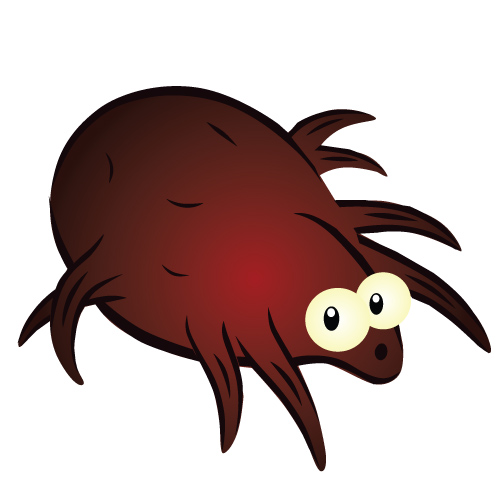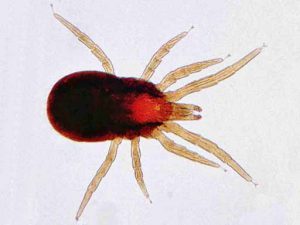
15 May Bird Mites
 Mites are among the most diverse and successful of all the invertebrate groups. They have exploited a wide array of habitats, and because of their small size (most are microscopic), go largely unnoticed. Some live freely in the soil or water, but many others live as parasites on plants, animals, and some that feed on mold. Some 48,200 species of mites have been described.
Mites are among the most diverse and successful of all the invertebrate groups. They have exploited a wide array of habitats, and because of their small size (most are microscopic), go largely unnoticed. Some live freely in the soil or water, but many others live as parasites on plants, animals, and some that feed on mold. Some 48,200 species of mites have been described.
Mites occupy a wide range of ecological niches. For example, Oribatida mites are important decomposers in many habitats. They eat a wide variety of material including living and dead plant and fungal material, lichens and carrion; some are predatory, though no oribatid mites are parasitic.
Many mites are parasitic on plants and animals. One family of mites Pyroglyphidae, or nest mites, live primarily in the nests of birds and animals. These mites are largely parasitic and consume blood, skin and keratin. Dust mites, which feed mostly on dead skin and hair shed from humans instead of consuming them from the organism directly, evolved from these parasitic ancestors.
Insects are sometimes infested by parasitic mites. Examples are Varroa destructor, which attaches to the body of the honey bee, and Acarapis woodi (family Tarsonemidae), which lives in the tracheae of honey bees. Hundreds of species are associated with other bees, mostly poorly described. They attach to bees in a variety of ways. For example, Trigona corvina workers have been found with mites attached to the outer face of their hind tibiae.Some are thought to be parasites, while others are beneficial symbionts.
